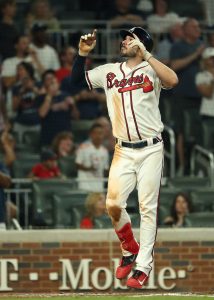The Marlins don’t seem especially likely to contend in 2020. But the club clearly has designs on drawing some attention — from local fans and the national baseball scene — to its efforts.
MLB.com’s Joe Frisaro captures the prevailing internal sentiment in a post that includes some quotes from skipper Don Mattingly and a video interview with CEO Derek Jeter. Both of those key leaders are obviously former Yankees legends, and the oft-noted connection certainly seems to inform the Miami organization’s plans.
Speaking from an ownership-level perspective, Jeter left no doubt that he seeks to recreate the winning culture that he came up with in the George Steinbrenner-owned Yankees. How do you create that? Per Jeter, you simply “start winning” in the minors and beyond.
It certainly sounds like mindset is a key for the Fish. Jeter says he expects the team’s players to embrace the open opportunities and challenges ahead of them. He has advised the team that “competition eliminates complacency.”
Jeter is obviously applying some pressure to the MLB roster. “Our guys are being pushed” in camp, he says. The plan for the pitching staff is “a little bit old school;” the club will “let ’em take their lumps along the road.”
Talent isn’t something that can just be willed into existence. But the team proved its own commitment to its philosophy when it parted with a series of interesting pitchers this winter. The Marlins were tired of waiting for potential to translate into MLB ability; other organizations were willing to commit 40-man roster spots to the discarded arms.
The Miami organization has replaced some of that unproven talent with a series of sturdy veteran types. The idea seems to be that it’s time to move towards results at the MLB level.
Mattingly certainly says as much. He’s looking for “significant improvement” in the win-loss column. It shouldn’t be too hard to move the ball after a 57-win 2019 campaign, but Mattingly says he also hopes his charges can “make some noise” in 2020.
There’s obviously a strong long-term connection between the on-field product and the team’s off-field business efforts. The Marlins have an increasingly interesting group of talent on hand but fans are understandably wary after years of unmet expectations. Jeter spoke of a need to build “trust” with the fanbase. And he also acknowledged that the club’s ongoing efforts to hammer out a new (and hopefully more lucrative) television contract are of “huge” importance.

